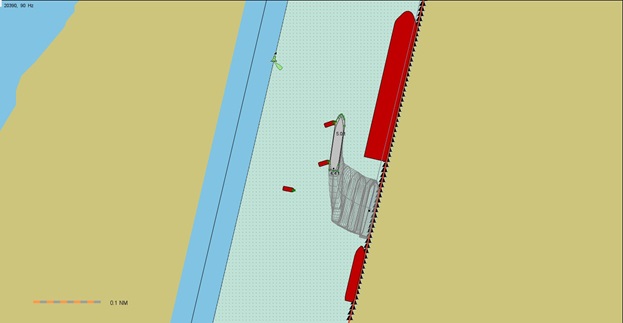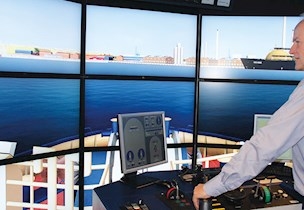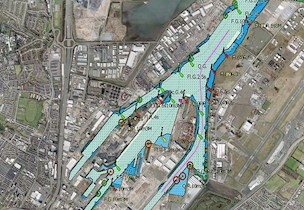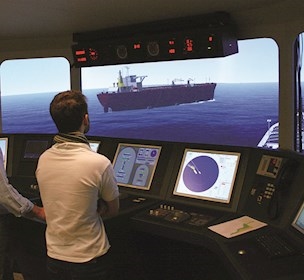Safe mooring distances create a profitable harbour for East Port Said Port
Using the knowledge of our skilled engineers, experienced captains and innovative simulators, we provided East Port Said Port with a ruleset for safe mooring distances that will reduce the amount of accidents.
We have conducted a simulator study for Suez Canal Container Terminal SCCT, East Port Said Port, Egypt. SCCT propositioned us because they had experienced a number of accidents connected to mooring operations and passing vessels in the harbour. The accidents happened when vessels were arriving or departing.
According to Khaled Tantawy, Engineer and Projects Manager on SCCT Port Said, they choose us as their partner on the project because we had provided them with good results on a previous project regarding accessibility of EEE ships in the port.
This time our assignment requested by SCCT was:
- To assess the safe mooring distances between moored vessels
- To assess the safe distance when passing a moored vessel
Our objective was to provide SCCT with a set of guidelines concerning safe mooring. By using the guidelines, they would be able to reduce or avoid the accidents.
Our experienced engineers knew that so called ship-ship interactions play a part in these kinds of operations. Bugge Torben Jensen, Senior Project Manager at FORCE Technology explains: “When a ship sails past a moored ship, ship-ship interactions are created. This means that if the ship sails too closely to the moored vessel at a pace that is too fast it can cause movements in the water causing the mooring lines to break and in the worst case for the moored ship to cause damage on other ships".
Ship-ship interactions are not the only issue the engineers were concerned with: “We know it’s all about taking advantage of all the space the harbour has to offer. However, there a limits for how closely you can moore the ships. The vessel’s power consumption, the tugs, the current and the wind also play a huge role, when conducting safe operations,” Explains Bugge.
Real-time simulation and fast-time simulation
We used our full mission bridge simulator to conduct tests with container vessels of varying sizes during harsh weather to ensure that the results would be applicable even during the worst weather scenarios.
When assessing the safe distance between the moored ships we used real-time simulations, where the captain sailed at the same speed as he would in reality.
To assess the safe passing distances, we conducted fast-time simulation, where the computer controlled the vessel at a faster execution speed. Bugge explains why this method was suitable: “We tested how close the vessel could sail to the moored ship when sailing 5 knots, which is the maximum speed, permitted in the harbour. By using the fast-time simulator we could run a large number of tests in a short time period”.
Innovative methods and results
The engineers started out by conducting a literature study in order to uncover the existing knowledge on the subject. They found some studies regarding safe passing distances but were unable to find any reports regarding safe mooring distances. Consequently, this study is the first one concerning this subject as well as being a brand new way of using our simulators.
Upon request from SCCT, we developed an equation to calculate the safe mooring distances between the vessels taking length, width, tonnage and wind/current into consideration.
“The combination of our realistic simulators and the knowledge, skill and experience of our engineers and captains created a great result,” Bugge concludes.





